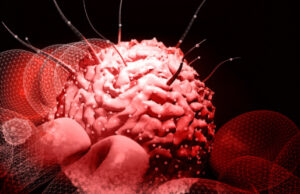Hematopoietic stem cells (HSCs) give rise to all types of blood cells through myeloid progenitor cell types (e.g., red blood [RBCs] cells and macrophages) and lymphoid progenitor cell types (e.g., natural killer cells and T- and B-cells). Previous studies have shown that clonal diversity of cells decreases with age, and that HSCs acquire mutations over time that can serve as a barcode to trace cells. A new technique named ReDeeM (single-cell Regulatory multi-omics with Deep Mitochondrial mutation profiling) improves the efficiency of this process by enriching for mitochondrial DNA (mtDNA) mutations, which are acquired ten times faster than somatic mutations. ReDeeM also simultaneously creates three libraries including one for mtDNA sequencing and mutations, RNA gene expression, and ATAC-seq (assay for transposase-accessible chromatin using sequencing) for chromatin accessibility allowing researchers to access the diversity of HSC clones and their transcriptional states and accessibility. Using ReDeeM, researchers compared hematopoiesis in young (aged 31 and 26 years) and old (aged 76 and 78) healthy bone marrow donors. In young donors, most HSC clones gave rise to blood cells but with a 5-fold difference in the specific cell types made. In contrast, in old donors certain HSC clonal groups produced more blood cells, and the clonal diversity decreased overall, which may explain why certain types of cancers are more prevalent in older individuals. This new technology will help to refine our clonal understanding of HSCs, their dynamics, and help to predict disease risk for certain types of blood cancers.
Reference:

